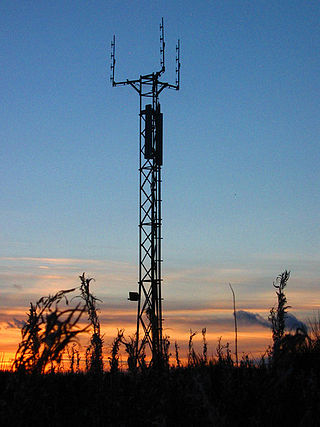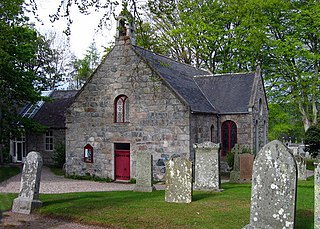
Maryculter House is a historic house in the village of Maryculter, or Kirkton of Maryculter, in the Lower Deeside area of Aberdeenshire, Scotland.

Maryculter House is a historic house in the village of Maryculter, or Kirkton of Maryculter, in the Lower Deeside area of Aberdeenshire, Scotland.
Lying along both banks of the River Dee, the Lands of Culter originally included the parishes of Peterculter and Maryculter. These were in the jurisdiction of the monks of Kelso. [1] However, about the year 1187, William the Lion granted the portion of the Culter lands on the south bank of the river to the Knights Templar. [2]
Between 1221 and 1236 Walter Byset, Lord of Aboyne, founded the Preceptory or College of the Knights Templar on the site of Maryculter House Hotel. [2] [3] [4] The barrel-vaulted basement of the house is said to have formed part of the Preceptor's Lodging. [2]
The Templars also built a chapel. [2] This became the parish church in 1535, was abandoned in 1782 and is now a fragmentary ruin, the only architectural feature surviving being the piscina built into the south wall. [4] [5] The chapel and surrounding graveyard are a Scheduled monument. [6] The chapel was replaced as the parish church by Maryculter Trinity Church.
The Templars were suppressed around 1309 but their lands and the parish church remained in the hands of the Knights Hospitaller until 1563/64. [3]
From 1535 to 1811 Maryculter House was first rented and then owned by the Menzies family of Pitfodels, Aberdeen, [2] [7] though another source says it was owned by the Lindsay family until 1726. [8]
In 1811, Maryculter was bought by General William Gordon of Fyvie, and the Gordon family owned the estate until the death of Sir Cosmo Duff-Gordon in 1931 led to the sale of the property in 1935. [2] [9] The estate was broken up and the home-park was bought by the City of Aberdeen Boy Scouts' Association to create Templars' Park Scout Campsite. [10] Alterations to the house took place in 1936. [11]
The building is now a hotel, previously the Deeside Hotel and now Maryculter House Hotel. [12] [2] It is a Historic Environment Scotland Category B Listed building. [13]

Banchory is a burgh or town in Aberdeenshire, Scotland. It is about 18 miles (29 km) west of Aberdeen, near where the Feugh River meets the River Dee.

Ballater is a village in Aberdeenshire, Scotland, on the River Dee, immediately east of the Cairngorm Mountains. Situated at an elevation of 213 metres, Ballater is a centre for hikers and known for its spring water, once said to cure scrofula. It is home to more than 1400 inhabitants and has had a long connection with the British royal family.

The River Dee is a river in Aberdeenshire, Scotland. It rises in the Cairngorms and flows through southern Aberdeenshire to reach the North Sea at Aberdeen. The area it passes through is known as Deeside, or Royal Deeside in the region between Braemar and Banchory because Queen Victoria came for a visit there in 1848 and greatly enjoyed herself. She and her husband, Prince Albert, built Balmoral Castle there which replaced an older castle.

Peterculter, also known as Culter, is a suburb of Aberdeen, Scotland, about eight miles (13 km) inland from Aberdeen city centre. Peterculter is on the northern banks of the River Dee, near the confluences with Crynoch Burn and Leuchar Burn. Following the 1996 Scottish council boundary changes it became part of the Lower Deeside ward in the Aberdeen City council area.

Aboyne is a village on the edge of the Highlands in Aberdeenshire, Scotland, on the River Dee, approximately 26 miles (42 km) west of Aberdeen. It has a swimming pool at Aboyne Academy, all-weather tennis courts, a bowling green and is home to the oldest 18 hole golf course on Royal Deeside. Aboyne Castle and the Loch of Aboyne are nearby.

Aberdeenshire or the County of Aberdeen is a historic county and registration county of Scotland. The area of the county, excluding the Aberdeen City council area itself, is also a lieutenancy area. The county borders Kincardineshire, Angus and Perthshire to the south, Inverness-shire and Banffshire to the west, and the North Sea to the north and east. It has a coast-line of 65 miles (105 km). The county gives its name to the modern Aberdeenshire council area, which covers a larger area than the historic county.

Clan Gordon is a Highland Scottish clan, historically one of the most powerful Scottish clans. The Gordon lands once spanned a large territory across the Highlands. Presently, Gordon is seated at Aboyne Castle, Aberdeenshire. The Chief of the clan is the Earl of Huntly, later the Marquess of Huntly.

Rothley Temple, or more correctly Rothley Preceptory, was a preceptory in the village of Rothley, Leicestershire, England, associated with both the Knights Templar and the Knights Hospitaller.
WestAberdeenshire was a Scottish county constituency of the House of Commons of the Parliament of the United Kingdom from 1868 to 1918 and from 1950 to 1983. It elected one Member of Parliament (MP) by the first past the post system of election.

Maryculter or Kirkton of Maryculter is a village in the Lower Deeside area of Aberdeenshire, Scotland. The River Dee separates it from the town of Peterculter, and the B979 road runs through Maryculter. Maryculter House Hotel lies slightly north of the village along the south bank of the River Dee and to the west of Templars Park. The Old Mill Inn, a former coaching inn dating back to the 18th century lay at the mouth of the Crynoch Burn from 1797 until its demolition in February 2021 after being damaged by an extensive fire. At the edge of the village of Maryculter is a public forest land, known as the Oldman Wood, through which flows the Crynoch Burn. Also the children's theme park, StoryBook Glen, which also consists of a shop and restaurant is located near the old church which is still in use today as a Church of Scotland. Other notable vicinity buildings include the former Lairhillock Inn which closed in March 2020 and Muchalls Castle. Maryculter also has an animal sanctuary, Blaikiewell Animal Sanctuary.

Gight is the name of an estate in the parish of Fyvie in the Formartine area of Aberdeenshire, Scotland, United Kingdom. It is best known as the location of the 16th-century Gight Castle, ancestral home of Lord Byron.
In 1128, the cousin of St Bernard of Clairvaux, Hugues de Payens, met King David I in Scotland. The Order established a seat at Balantrodoch, now Temple, Midlothian on the South Esk. In 1189, Alan FitzWalter, the 2nd Lord High Steward of Scotland was a benefactor of the Order.

Lumphanan is a village in Aberdeenshire, Scotland located 25 miles (40 km) from Aberdeen and 10 miles (16 km) from Banchory.

Kincardine O'Neil is a village in Aberdeenshire, Scotland. It is situated between the towns of Banchory and Aboyne approximately 25 miles (40 km) west of Aberdeen on the north bank of the River Dee.

Clan Bissett is a Scottish clan. The clan is recognised by the Lord Lyon King of Arms but does not have a clan chief recognised by the Lord Lyon King of Arms, therefore the clan has no standing under Scots Law. Clan Bissett is considered an armigerous clan, meaning that it is considered to have had at one time a chief who possessed the chiefly arms; however, no one at present is in possession of such arms. The surname Bissett is also considered a sept of the Clan Fraser of Lovat.

Aberdeenshire West is a constituency of the Scottish Parliament (Holyrood) covering part of the council area of Aberdeenshire. It elects one Member of the Scottish Parliament (MSP) by the first past the post method of election. Also, however, it is one of ten constituencies in the North East Scotland electoral region, which elects seven additional members, in addition to ten constituency MSPs, to produce a form of proportional representation for the region as a whole.

St Mary's College, Blairs, situated near Aberdeen in Scotland, was from 1829 to 1986 a junior seminary for boys and young men studying for the Roman Catholic priesthood. Part of the former college now houses Blairs Museum, the museum of Scotland's Catholic heritage. The New Chapel is a Category A listed building, with the other buildings listed as Category B.

Lumphanan railway station, Lumphanan, Aberdeenshire, Scotland stood from 1859 to 1966 on the Deeside Railway that ran from Aberdeen (Joint) to Ballater. It served the village of Lumphanan, Aberdeenshire, famous for its associations with Macbeth and King Malcolm III. It stood close to the Macbeth Arms Hotel.

St. Lesmo of Glen Tanar is the name given to a holy hermit who it is believed lived in Glen Tanar Aberdeenshire Scotland in the eighth century. He is recorded by Thomas Dempster as a "saint" in the seventeenth century. His claimed Saints’ Day is 9 December.